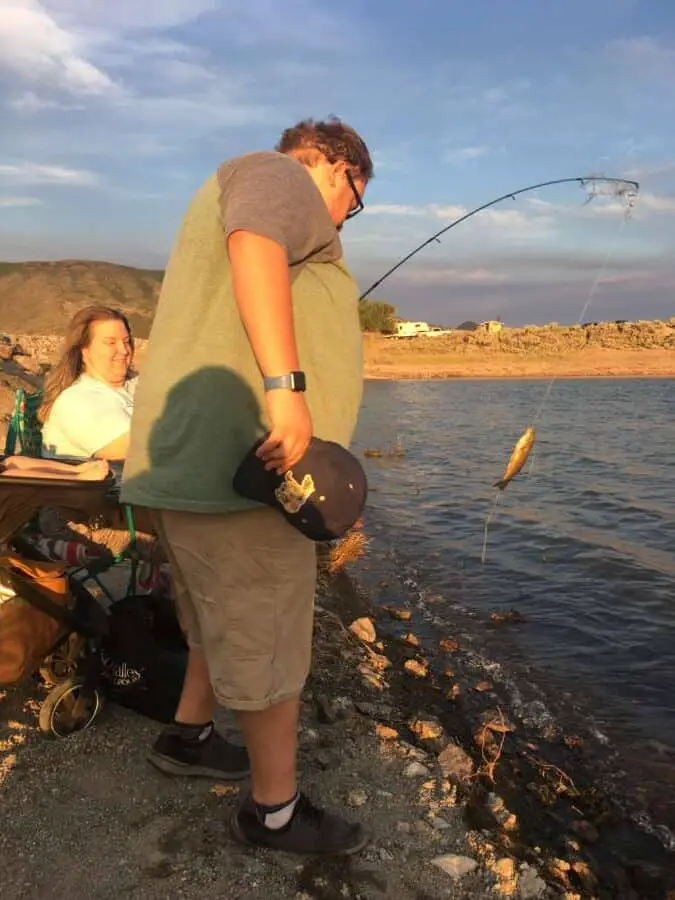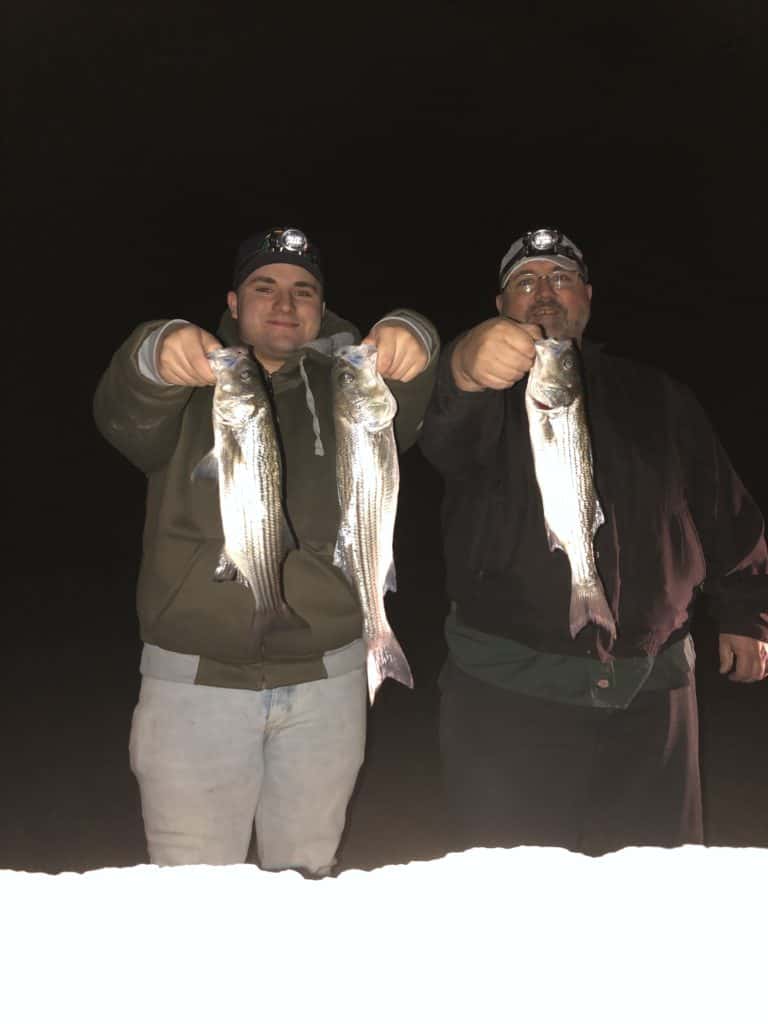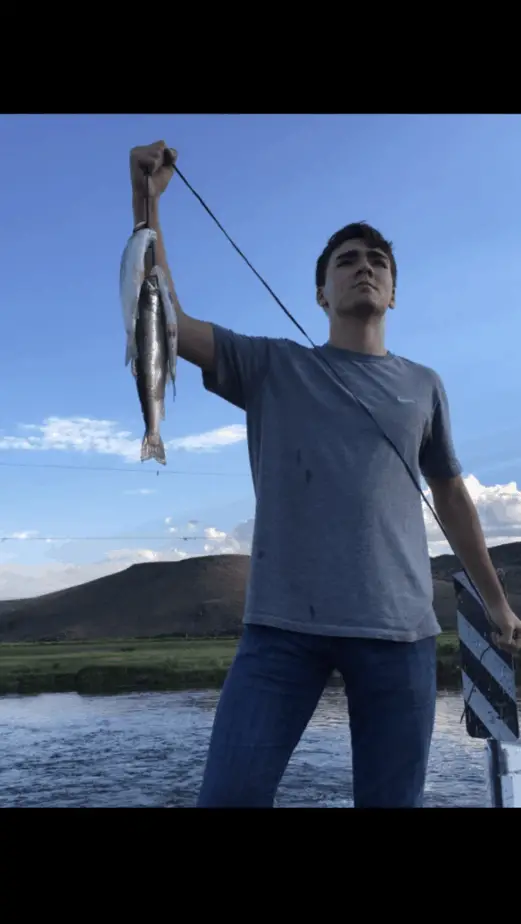Table of Contents
Fishing is a pastime that has been enjoyed by literally millions the world over. Indeed, individuals even get into debates over the best type of fish to catch, the best lines to use, and even whether live bait or lures are better to use for their fishing hobby.
Naturally, there are even people who will talk about just when exactly the best time to go fishing in the first place would be. Of course, the debate won’t be settled with this article, but we can weigh our opinion here as well.
Generally speaking, morning and evening are best for fishing times during the day. Most people would argue that spring time is the best time of year to go fishing as the fish are hungry and protective of their spawning beds which makes for fish that will attack your lure.
When you answer the question, However, “When should I go fishing?” there are a lot of variables that you have to answer. It will be different for someone living in Minnesota or Canada than it will be someone living in the Deep South or in Texas. However, we will do our best in answering that question thurougly and I think you will pick up some tips that will increase your chances of getting a lunker.

Take a look at some of these variables:
For starters, keep the time of year in mind.
The fish behavior will always be dictated by the time of year. Much like human beings, the fish will all do certain things based on the seasons. If you really want to fish well, you will realize what most seasoned anglers already know: whether the fish biting only depends on the environment around them. Seasoned anglers will also plan their trips accordingly.
They are motivated to get the “big one”, so of course they are going to strategize. The seasoned anglers will know what to do for each and every season.
Angling For Fish in the Summer
First of all, let’s take a look at fishing in the summer. In the summertime, there is plenty of abundant food for the fish to find. Additionally, there is also a multitude of underwater foliage for the fish to use to take cover.
Thus, even though the climate is good for the would-be fisherman, summer fishing does have its share of challenges. First of all, you need to realize that as soon as late morning to early afternoon, the fish are going to go off to the cooler waters and possibly go away from your fishing spot.
Obviously, this means less fish for you to catch. Thus, when you are fishing in the summer, you should focus on trying to catch them from about the dawn to the middle of the morning. That old saying, “the early bird gets the worm” is definitely a true statement in this case.
Of course, if you have work commitments during this time period, you could also try fishing during the afternoon or early evening. This is when the summer fish will get a bit cold in the deeper water, and so they will head back closer to shore in order to take advantage of that warmer water. Fishing is often better during this time of day, with better chances of a catch as a result.
Fishing in the Fall
The fish won’t bite much from the dawn to the early morning because the water will be too cold. They will yet again usually be in warmer waters. However, the fish will get more active from the latter parts of the morning to just after lunchtime.
They will also start coming to the surface once the water starts warming up. Be aware that the fall is also the prime time for many fish species to try to put on some extra, so they will usually be looking to join schools of fish looking for food. Thus, you should adjust your bait accordingly.

Watching Out For Fish in the Winter
Surprisingly, most people who try fishing in the winter seem to enjoy it because it actually can be a rewarding experience. First of all, there aren’t as many anglers out on the water because most will prefer the warmer weather.
Moreover, you will often have the opportunity to try for different species of fish that are not as prevalent during the other parts of the year. During winter, one of the most important things to understand would simply be knowing the right time to go fishing.
This usually is between 10 A.M to 4 P.M. During this time the fish are usually a bit warmer and more prone to bite on your bait or lure.
Of course, if you are going to try for winter fishing, you should make sure your equipment is in top shape. For example, watch out for the reel bearings that you use for fishing. If it was stiff or noisy in warmer weather, it was already at a disadvantage.
Chances are it will break down completely in a winter environment. Moreover, the old grease and oil on a reel can thicken and make it difficult to use.
You should keep them clean and lubricated so you won’t lose out on the perfect fish. Also, you should be aware that lines composed of fluorocarbon or monofilament will not work quite as well in the winter months.
If this seems daunting to you, there is good news: considering that it’s winter, there will be a significantly less amount of vegetation in the water, meaning that the fish will be less likely to get themselves (and your line) tangled up in it.
You also can get by just fine with fishing lines that are smaller in diameter because they will be less likely to twist and get stiff.
Finally, you also need to make sure you choose the best bait for the winter months. The best choice is usually live bait because these creatures are often already present in nature and will react to the cold water by instinct. Live bait such as minnows, shiners, or live worms are all good options.
Some anglers still like to go with artificial bait during the winter months. However, this can be quite a bit more challenging, simply because you have to be able to properly mimic the speed of live bait in order to entice one of these fishes. In a word, you have to fish slowly.
However, if you still want to try artificial bait, you should try going with items that have either feathers or hair. These components tend to move with the water currents and will often remain in the fish’s stroke zone.
Next, keep the weather in mind when you think about the best times to fish.
When you think about the best timing for all of your fishing adventures, don’t neglect thinking about the weather. This is a very important variable for determining whether the fish will bite or not. Although a whole article could be written about this topic alone, here are just some of the fishing circumstances that could occur due to the weather:
Frontal Systems
First of all, if you encounter a frontal system in the area where you are fishing, it is going to impact the barometric pressure. The fish can sense this through the lateral lines on their skin. If the pressure rises, it means that the fish will tend to feed more than if the barometric pressure is falling.
Warm and Sunny Weather
If you are going to fish at a time where the weather is warm and sunny, you should realize that the fish will often be more present in the deeper waters. This might be a time where you should strongly consider fishing off of a boat instead of off on the shore. Alternately, you could simply wait until the later morning hours when the sun is warming the area just off the shore.
Cloudy Days
Many anglers swear by the cloudy days because there is less sunlight bearing down on the water. Naturally, this makes the water much more comfortable for the fish, and they would have a tendency to feed more where you are fishing.
Very Cold Weather
Although we’ve already touched on this a bit during the winter section, you should be aware that a fish will not feed as much during colder weather. This is because it takes them about 300 times longer to digest the live bait you feed them than it would during warmer weather.
What About the Different Species of Fish?
Of course, you also have to take into account the many different species of fish out there. If you are one of those anglers that likes to specialize, then chances are you probably want to know how to properly strategize for catching your favorite species, whatever it might be. If you can fully understand the behaviors of your favorite type of fish, you will have a better chance of having a successful fishing excursion. It is much like an Art of War concept: you need to know the enemy (fish) and know yourself. You need to understand their habits. Thus, here are some breeds that you might be interested in knowing more about.

Trout
There is no question that trout is a popular fish to try to catch. Generally, conventional wisdom has always been that the best time of year to try to catch this species would be in the large spring. Many old-timers swear by this time of year because they have caught some very large examples.
Of course, you should be aware of the factors of warm weather. First of all, you will have more competition from other anglers. Secondly, you will have more vegetation around the trout habitats.
Although this is a tremendous debate, there are some anglers who believe that the trout “get smarter” regarding the bait and lures during the latter part of the fishing season. Finally, you also should be aware that this species is cold-blooded. Thus, if the air temperature bothers you, it probably bothers the fish as well.
What about catching trout on a day-to-day basis? Well, the most important thing to keep in mind is that trout will usually feed in water temperatures between 34 and 67 degrees Fahrenheit.
You probably should check the water temperature often, because many experienced trout anglers insist that their feeding habits pick up when the water temperature is between 40 and 50 degrees.
If you are in extreme sun, you should be aware that the trout will prefer the shady spots since they don’t have any eyelids. In the summertime, the temperature just might go higher, at least into the high 60s or mid-70s. In that case, you should try to go upstream to find the trout because that is where the water is cooler.
Bass
Bass is one of those fish species that a lot of people seem to get intimidated by. Although they might seem to be hard to catch, the truth is that they basically will go after any lure or bait you throw at them. All you have to do is understand their behavior.
Bass Spawning
The best time to try to catch bass is either during or immediately after their spawning season. They are much more active during this time.
Within the southern regions of the United States, the bass will usually spawn during late winter. Alternately, in the northern regions, they will usually start their spawning activities in late spring.
Of course, there are some states where the bass fishing season is closed during this time because the female bass are carrying eggs and game and wildlife officials don’t want them to be disturbed or overfished.
However, if that is the case in your state, just remember that in some cases you can fish for them a few weeks after they spawn when the females get an appetite again.
Salmon
Salmon is also a fascinating breed to fish for. The peak season for salmon fishing in Alaska is usually between May and September, but the five major salmon species will be spread throughout the season. Additionally, you should take the “turnover” into account as well.
This is the period of time in Alaska where the surface water and the bottom water at the bottom of the lakes and ponds begin the change. You need to understand what kind of fish like this in order to have a good Alaskan fishing experience.
Conclusion
The reason I brought up salmon and Alaska in this last portion is that it illustrates just how specific you have to be when it comes to finding the best time for fishing. You have to understand not only the fish behavior but how the weather and seasons affect them as well. The moon cycles and the tides will make a large difference, as well as the spawning seasons and many other factors. Keep these in mind, and you will have a much better fishing experience throughout the year!
If you have social media or a blog or even a business in fishing like a fishing guide, you can make money by giving away $10 store credit to your friends and followers. Click Here to find out how
Are you seriously looking turn your hobby into a business? I recommend joining Income School. I’ve been an Income School member for a little over a year and joining was the best decision I’ve made in working toward my business goal of making money online.

